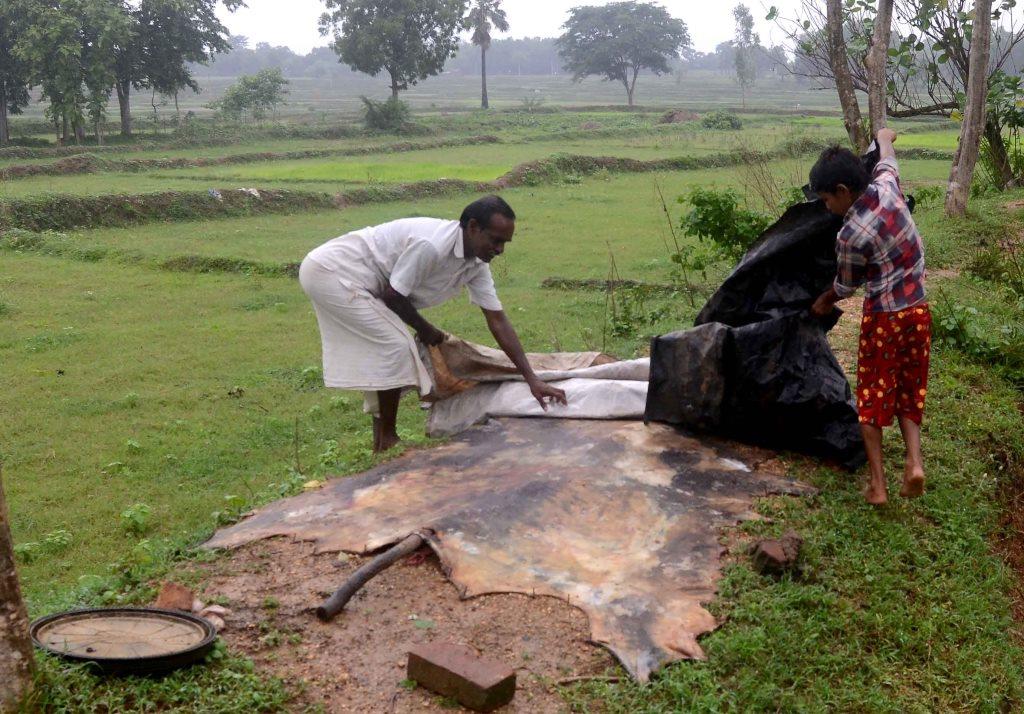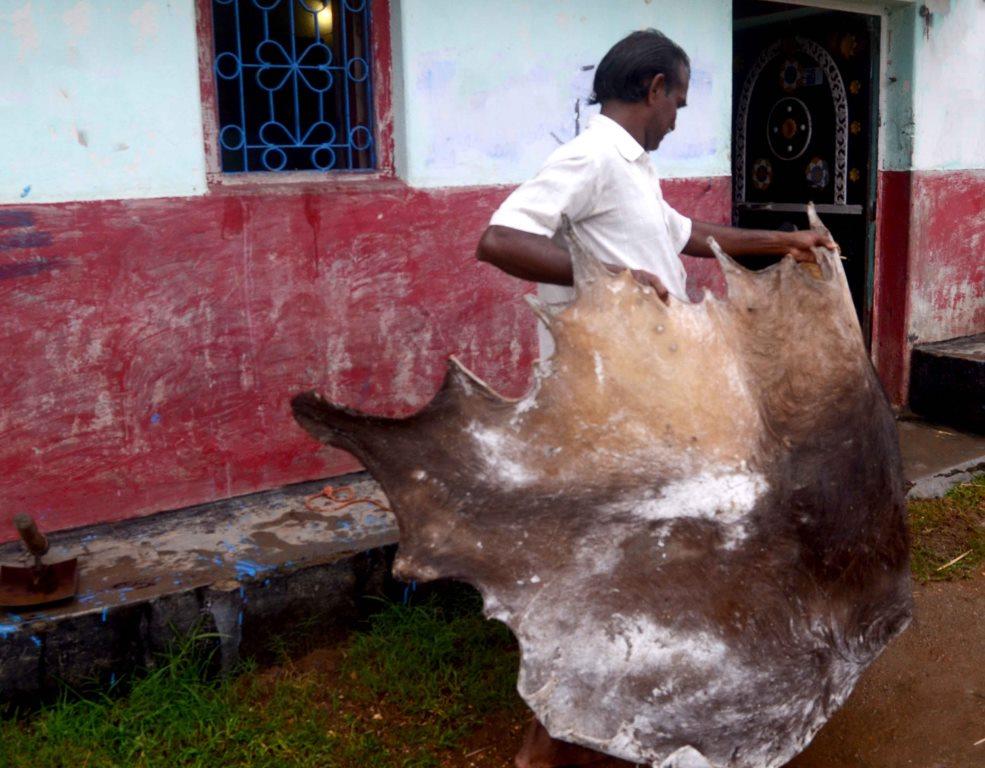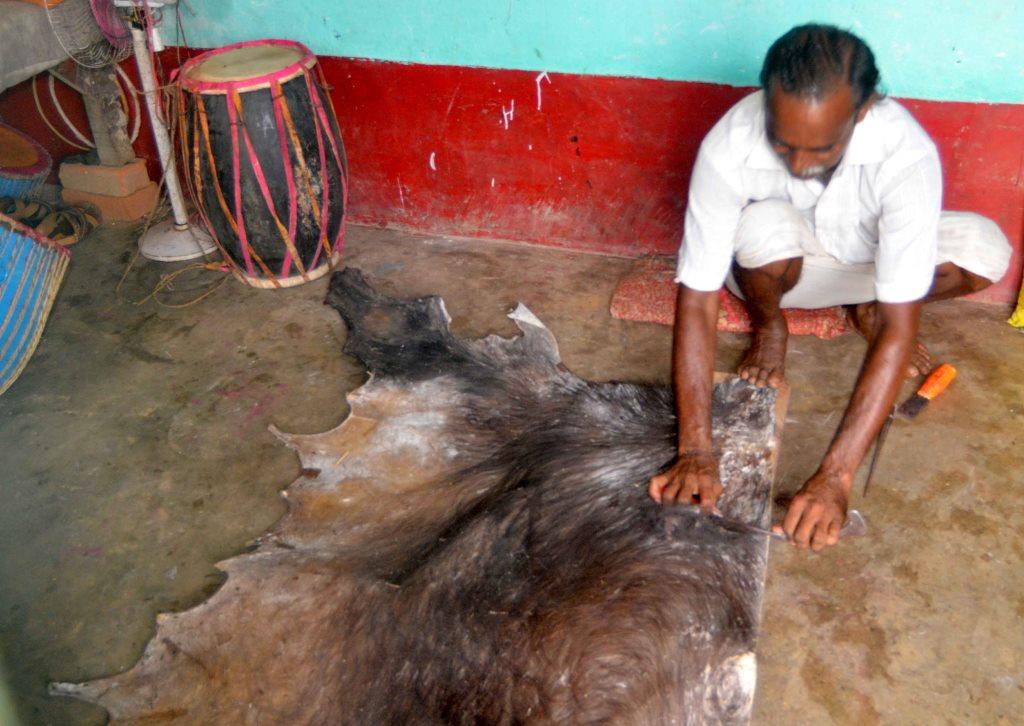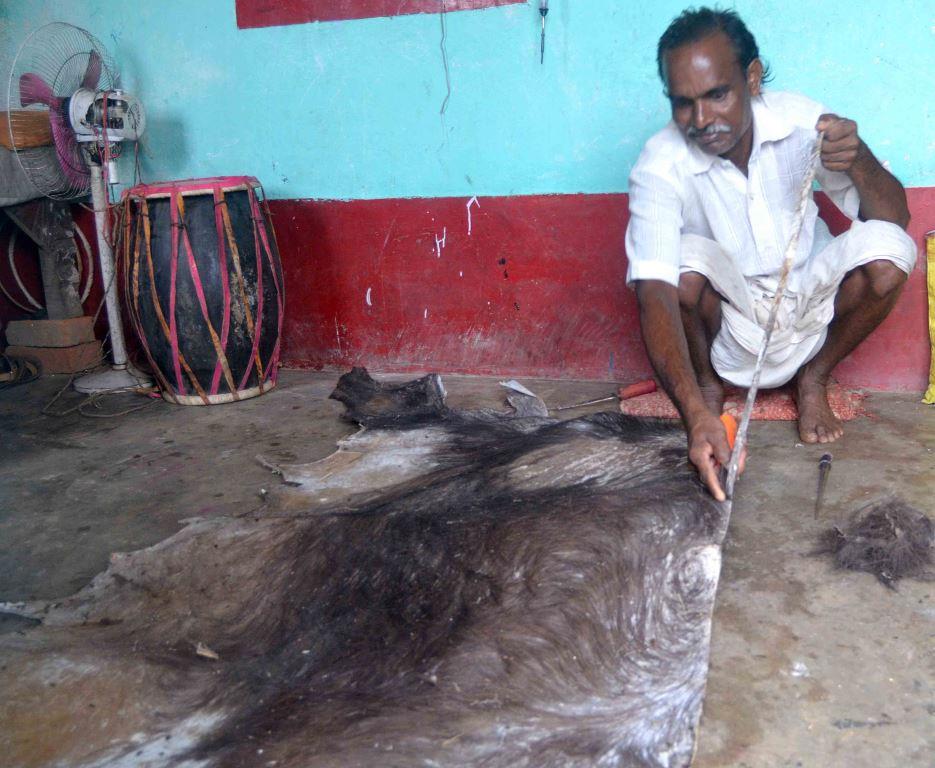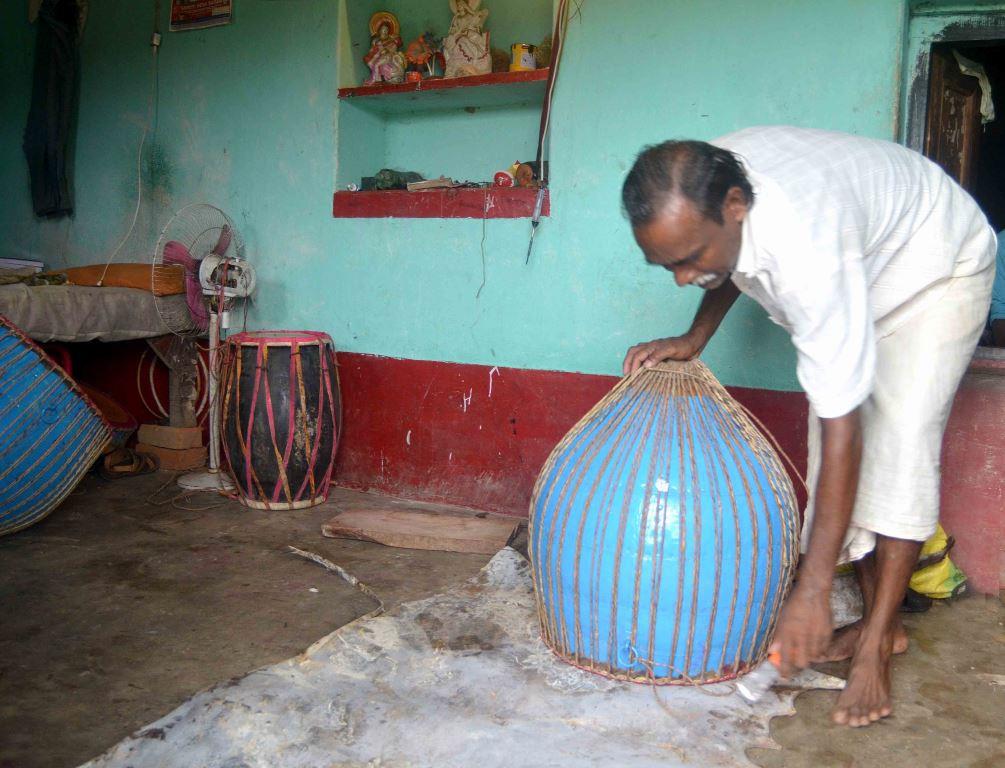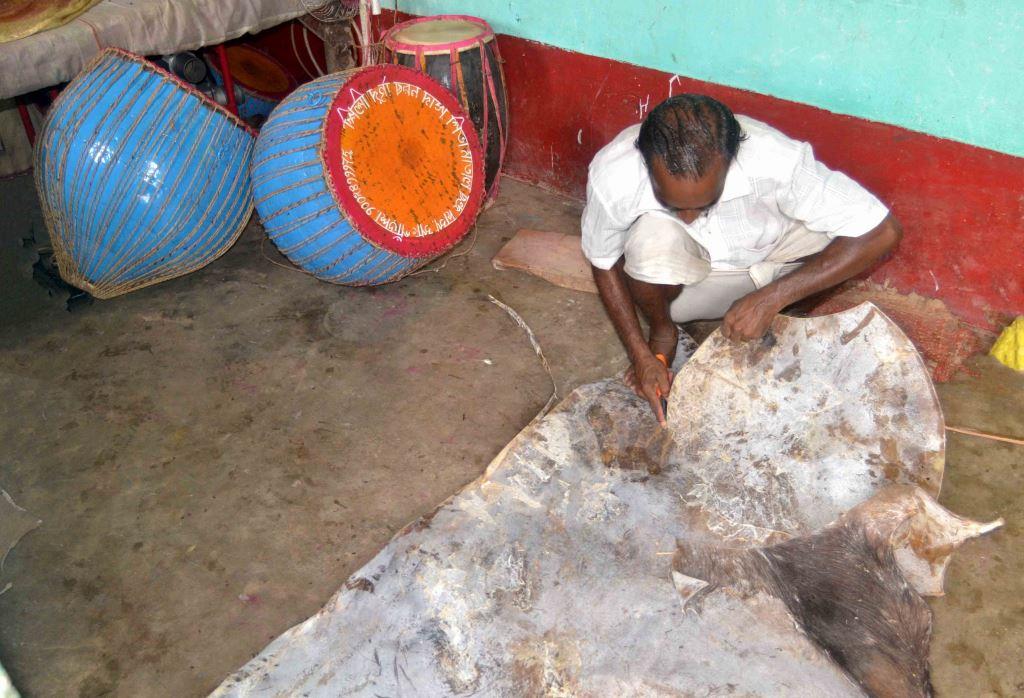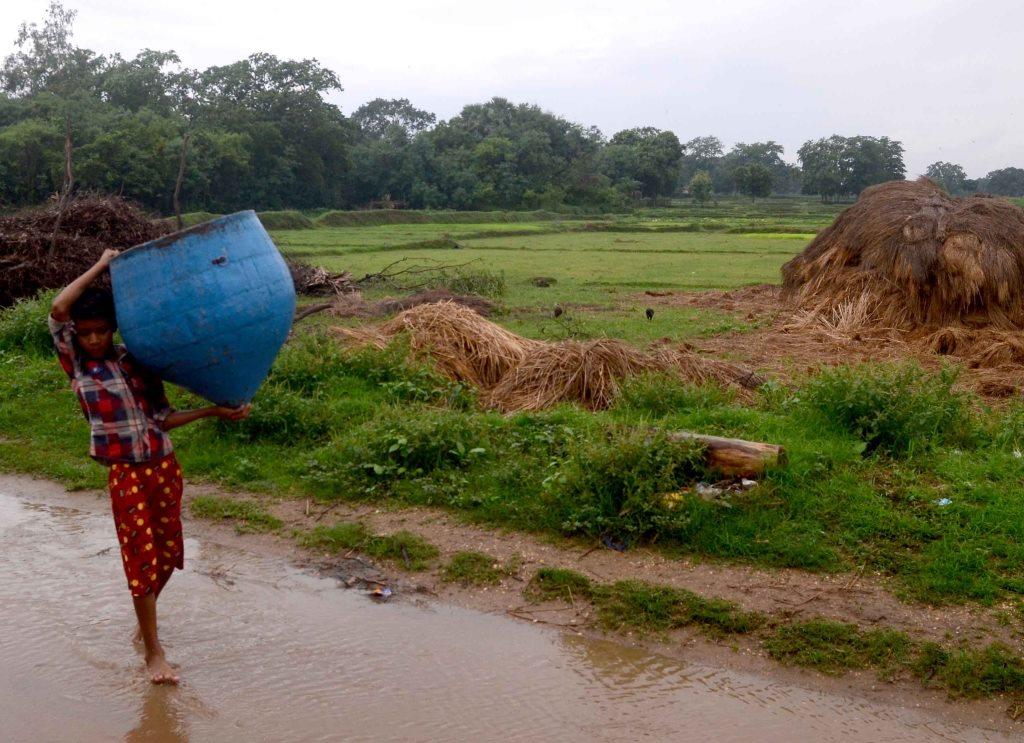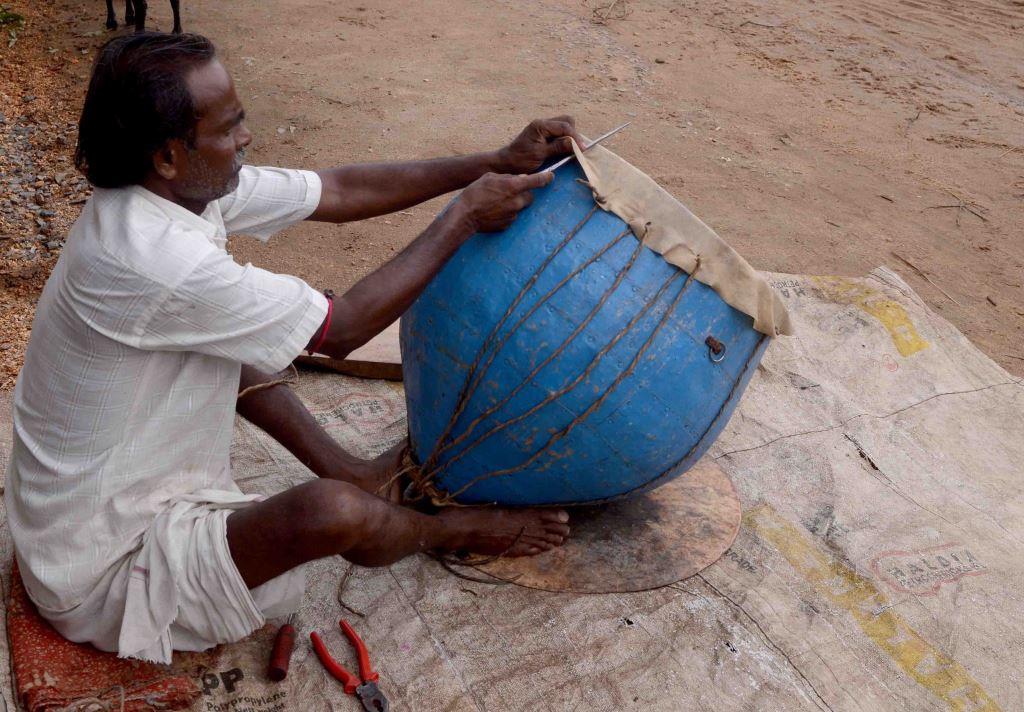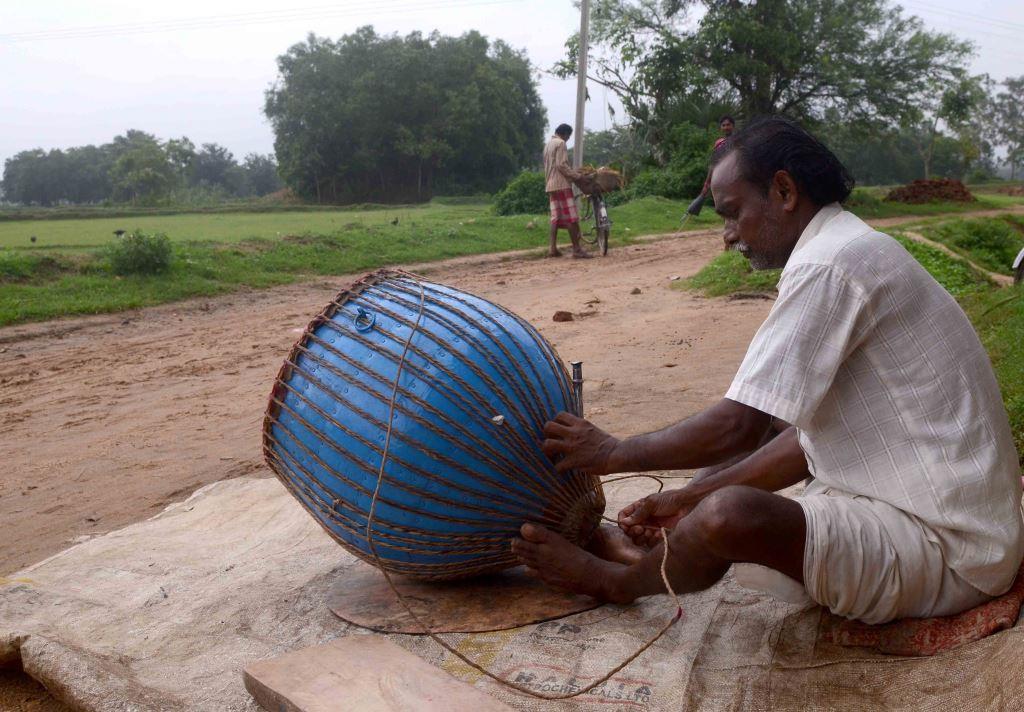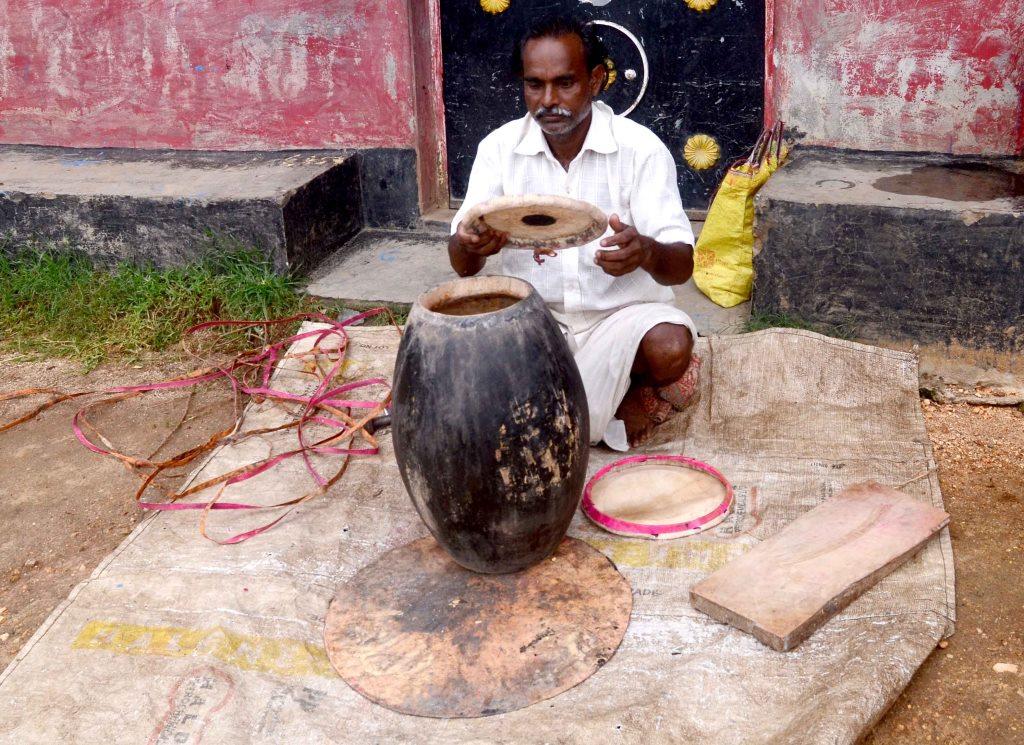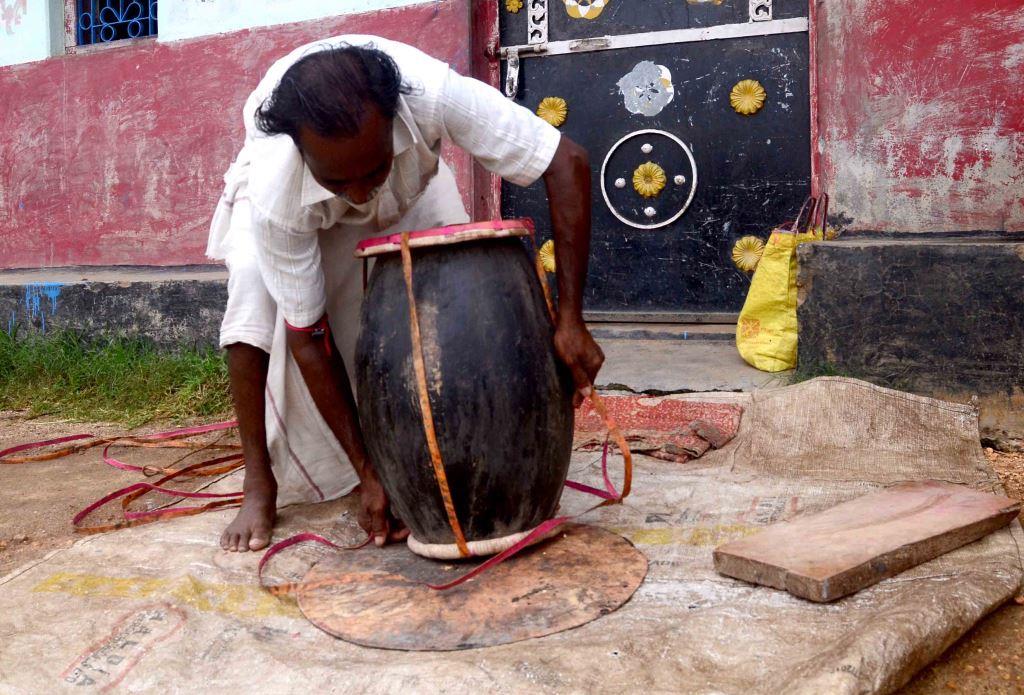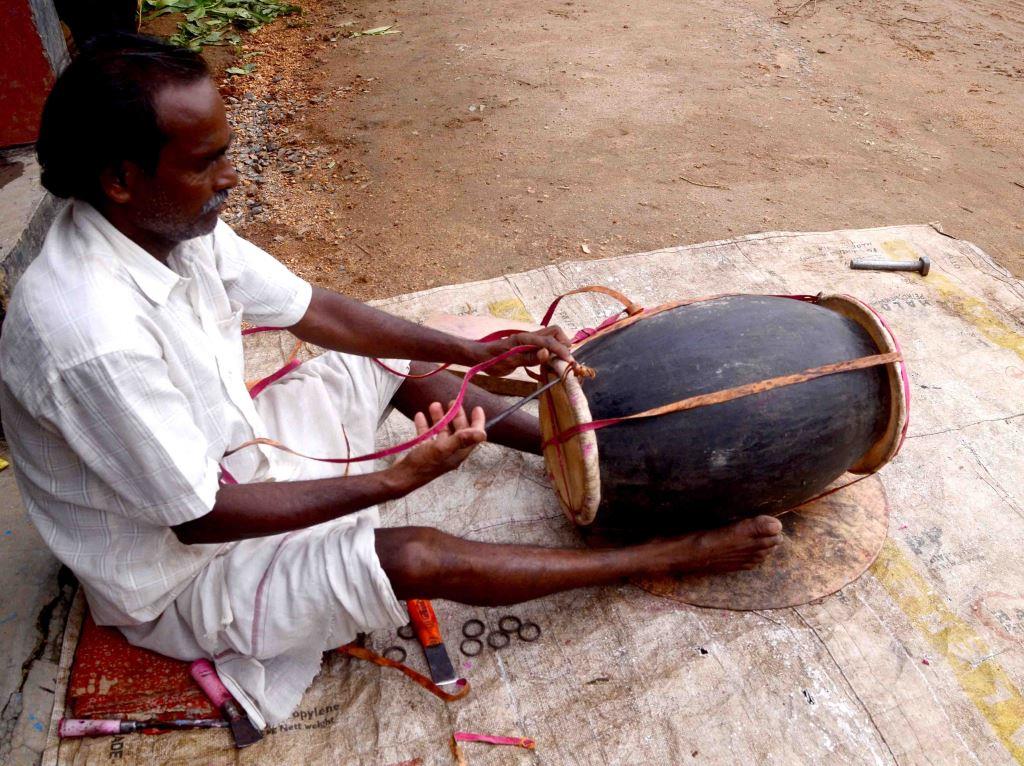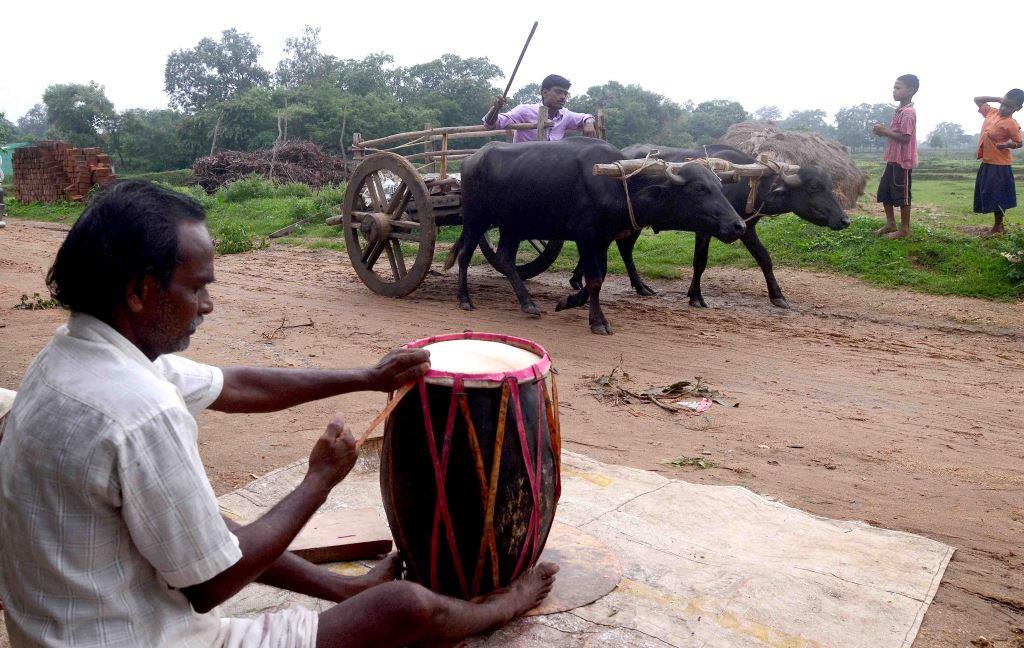Process
Dhamsa : The instrument structure is like a pan. Its structure is made of iron sheet and the cover is made of buffalo skin. The instrument is played with the support of wooden stick. Initially the hollow structure is made of iron sheet and then the cover is being put on the same. The dome shell is fitted with a leather ring to provide a base on the ground, made of leather lace. The ribs are tightened by placing them in the holes made on the outer edges of the overlaid leather. Tightening increases the tone and loosening make the tone slower and thicker. Silt is applied in the middle of the overlaid leather. The same technique is used in the medium and small sized nagaras.
Dhol : The Dhol is usually made from jackfruit and mango wood. For this, a wooden shell of about three and half feet diameter is opened. The middle part of the wood is slightly embossed. Both open ends are covered with goat leather. To tighten the skin of these two ends, they are tied around the forehead. Tightening and loosening in the leather are done up and down by the threaded metal ring in these fibers.
Madol : It is made by piercing of leather at either side of the open ends of a circular shell, about 3 to 3.5 ft long, of wood. Goat leather is used for mounting. Thin leather is tightly wrapped around it. The fabric is attached at both ends by making small holes in the upper end of its rounding and attaching it to a thin strip of leather. By tightening, these thin strips, the tension on both sides gets tight and the tone increases when beaten and the tone becomes thicker when loosened. The diameter of the left handed end is larger than the right handed end. The leather on the right hand end is slightly thick and rough.
Dotara : Dotara is usually made with items like, wood, steel, leather (typically stretched goat skin), strings (cotton/ nylon/ steel/ raw silk/bronze), tail piece (metal in modern design), wooden main bridge, knobs/ears/pegs (made of wood) and polishing materials. The wood is chopped into shape at the primary stage. Then the lower part is hollowed neatly because the sweetness of the sound depends mostly upon the shaving off of wood in the lower portion of the instrument. Then a peacock or common bird design is made on the upper extension. Goat skin and a metal plate are placed over the lower and middle portion, respectively. Again the thickness of the skin should be minimum for better tonal quality. Polishing and attaching the strings from the lower tail piece to the ears on top is the last thing to be done.
